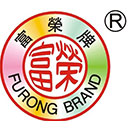What Is Red Chili Powder?
Red chili powder is a spice made from dried and ground red chilies (capsicum species), used widely in cooking across Asia, Latin America, and many other cuisines. Its bright red hue, spicy heat, and aromatic flavor make it a staple ingredient in stews, marinades, sauces, soups, condiments, and dry rubs.
A Deep Dive of Red Chili Powder
Origins and Types
The chilies used for red chili powder vary by region, each giving distinct heat levels and flavor profiles. Some common types include cayenne, Kashmiri, bird’s eye (Thai chili), and ancho (dried jalapeño). After harvesting, the chilies are typically sun-dried or dehydrated, and then ground into fine or coarse powder.
You’ll often find these variants:
Hot / fiery: made from pure hot chilies like bird’s eye, cayenne — sharp and biting.
Mild / aromatic: made from milder chilies like Kashmiri — deeper color, less sting.
Mixed blends: chili powder with added ingredients (paprika, cumin, garlic) — often labeled as “chili seasoning” in commercial blends.
Composition and Nutrition
Red chili powder is rich in capsaicin, the compound that gives chilies their heat. Capsaicin is associated with metabolism stimulation and may offer anti-inflammatory effects. The powder also contributes vitamins (especially vitamin C and A), carotenoids (which give the red color), and some minerals. However, because we use it in small amounts, its nutritional contribution in a dish is modest.
Heat / Spiciness Scale
The heat of red chili powder is often measured in Scoville Heat Units (SHU). Mild powders may register in the low thousands, while very hot varieties reach tens or hundreds of thousands of SHU. In recipes, heat is balanced with fats (oil, butter), dairy, sugar, or acid (vinegar, lemon) to mellow its sharpness.
Culinary Uses
Red chili powder plays a multi-dimensional role in cooking:
Color and visual appeal: a dash gives dishes a warm red or orange tint.
Spice / heat: it provides the “kick” or warmth in a curry, rub, or sauce.
Flavour complexity: good quality powder adds a fruity, smoky, vegetal note, not just heat.
Preservative effect: in some cuisines, chili’s antimicrobial properties help in condiments or pickles.
Typical uses include sprinkling over stir-fries, incorporating in marinades (meat, tofu, vegetables), seasoning soups or stews, mixing with oil to make chili oil, or dusting on snack foods.
Quality and Selection
When choosing red chili powder, consider:
Color: A vibrant red (not dull or brown) indicates freshness and good quality.
Aroma: You should smell a fresh, sharp chili fragrance. If it smells stale or dusty, it’s likely old.
Heat balance: Make sure the heat aligns with your taste—milder powders are better for broad appeal; stronger ones suit spicy-food lovers.
Purity: Avoid powders with too many fillers or artificial dyes.
Packaging: Airtight, opaque containers (protected from light and moisture) help maintain freshness longer.
Storage Tips
To preserve flavor:
Store in a cool, dry place, away from direct sunlight.
Use small jars rather than bulk containers.
Seal tightly after each use.
Use within 6–12 months for optimal smell and taste.
Safety and Usage Advice
Start small: especially if unfamiliar, begin with little and adjust upward.
Balance heat: Pair with cooling or neutralizing ingredients (yogurt, cream, coconut milk).
Sensitivity: Some people may feel irritation (on lips, throat) — cooking or dissolving in fat helps temper it.
Even distribution: For even spiciness, mix powder into oil or liquid first before combining with other ingredients.
A Note on HONGSING
If you are sourcing high-quality Spice Powders or chili blends, one company to consider is HONGSING. They produce a range of Spices and spice powders, along with related products. Their facility adheres to quality control systems (such as HACCP, BRC) and exports globally. Their product lines include spice powders, which may serve well if you plan to buy chili powder in bulk or for resale. You can learn more about their offerings on their website.

